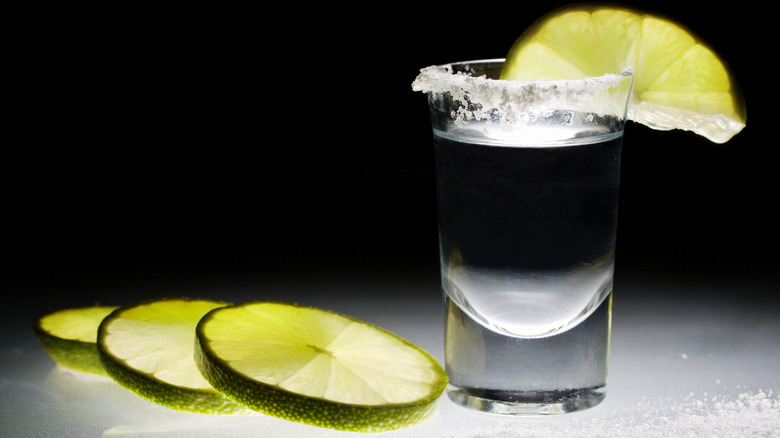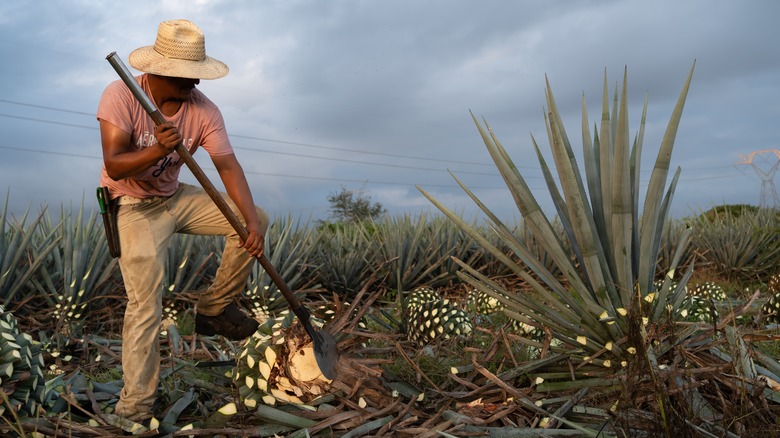What Makes A Tequila Premium?
To say that geography plays an instrumental role in defining and differentiating tequila would be an understatement. For starters, if it isn't made in one of five states in Mexico – Jalisco, Guanajuato, Michoacan, Tamaulipas, or Nayarit — it isn't even technically tequila. Plus, while all tequila must be distilled from the Blue Weber type of agave plant, where that Blue Weber is grown impacts the plant and therefore the tequila's flavor profile. Blue Weber grown at higher elevations is big and sweet, yielding oaky, vanilla-tinged tequila, while Blue Weber grown closer to sea level is smaller and tends to shape tequila with spicy, earthy notes. That's not the only way elevation, in particular, characterizes tequila.
Blue Weber grown at higher elevations makes for what is considered premium tequila — because, yes, there is absolutely a difference between some lower-quality tequilas that might be fine for mixing into cocktails with lots of other ingredients and tequila so impeccable you want to sip it straight. Agave at more soaring heights, where temperatures are cooler, is packed with minerals and nutrients. It's dense in flavors and aromas, so between that and its natural sweetness, distillers don't need to add other ingredients, additives, and sweeteners to their tequilas. Premium tequila is defined by a lack of those additives. By law, tequila must be made from at least 51% agave. Some makers fill the other 49% with additives for flavoring, which can dilute the tequila's purity and lead to nasty hangovers. Tequilas considered premium feature higher percentages of agave, up to 100%.
Premium tequilas are additive-free and further distilled
The way tequila is made can affect whether it's deemed premium or not, too. All tequila legally has to be distilled twice, but some makers might distill it three or more times, which improves upon the tequila's clarity. Some distillers take extra steps toward this level of purity with charcoal filtration: The tequila flows through charcoal, removing any flaws and impurities, resulting in a super clean taste.
The Blue Weber agave and where it's grown, the lack of additives, and whether it's further distilled or filtered are all deciding factors when it comes to whether tequila is premium or not, and these factors apply for blanco, reposado, and añejo. There are different types of tequila characterized by whether they're aged or blended. Blanco tequila is not aged, reposado tequila is aged for at least two months in oak or white oak barrels, and añejo tequila must be aged for a minimum of one year in French or white oak barrels.
For reposado and anejo, the barrels can boost a tequila's premium status. Makers can add complexity with bourbon, whiskey, or cognac barrels, and can also char the barrels for a smoky finish to the tequila. As the tequila ages, it takes on flavors and tannins from these barrels, so different barrel types make for unique tequilas. From the plant to the distiller's methods, plenty goes into making a premium sipping tequila.

